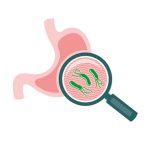In October, the interim report of the Accelerated Access Review laid out plans for speeding-up access to innovative drugs in the UK. The five key propositions were then used to frame the next phase of engagement, which will help to form the Review’s final recommendations and report due to be published in Spring 2016.
“The ultimate test of this review will be whether the final recommendations can be implemented rapidly, leading to improved delivery,” commented Rob Webster, chief executive of the NHS Confederation.
Innovation is key to patient access
2015 saw the arrival of some truly innovative new medicines with the promise of totally transforming some disease areas. Yet, most new oncology medicines are increasingly struggling to make it as far as the doctor’s clinic as they stumble at the NICE hurdle. With the NHS under increasing financial pressure, we need to look at new ways to get these medicines to the patients who need them – being innovative, coming up with new solutions and doing things differently.
At Janssen, we introduced the first-ever patient access scheme, where the NHS pays for our medicine based on the outcome for patients, the Velcade Response Scheme, and recently introduced a similar scheme for our hepatitis C medicine. Yet, such risk-sharing arrangements are increasingly not welcomed by the Department of Health or NICE, who see them as burdensome to administer.
Along with other colleagues in the industry, we have been contributing to the Accelerated Access Review and hope that 2016 will bring the reform to NICE that is needed in order for the UK to realise its ambition to be a world leader for the development and adoption of new scientific and medical innovations.
Jennifer Lee, director of health economics and market access, Janssen UK
Aligning regulators and payers is essential for patient access
In the past two years, both the European Medicines Agency and the US Food and Drug Administration granted their highest number of marketing authorisations in almost 20 years, and the pace shows no signs of slowing.
In the interests of patients, the EMA and FDA efforts to reduce authorisation times have resulted in approval of life-saving treatments in a much shorter time frame. However, as an industry, we know all too well that marketing authorisation does not always equate to treatment access. The real challenge comes when payers assess these innovative treatments.
One example, in oncology, is payer demand for overall survival data as a clinical trial endpoint, which, by definition, means enrolled patients have to die in order for this to be accurately measured. In many tumour types, overall survival data can take years to collect, ultimately resulting in unacceptable delays in patients getting access to a potentially life-saving treatment.
The licensing agencies understand this issue and have adapted their systems when new drugs are truly innovative. Unfortunately, payer systems do not match this flexibility and innovative drugs are often not funded for the patients they were designed to treat. Now is the time to drive a change and increase alignment between the licensing agencies and payers.
Sean McGrath, chairman and director of oncology, Succinct Medical Communications and OPEN Health






